In this post, we are going to talk about squatting while pregnant.
Specifically, you are going to learn:
- Is it safe to squat while pregnant?
- What are the benefits of squatting during pregnancy?
- Can squatting help dilate the cervix or induce labor?
Plus, I’ll go over 7 safe squatting exercises you can do during pregnancy.
You won’t want to miss this.
Let’s get started!
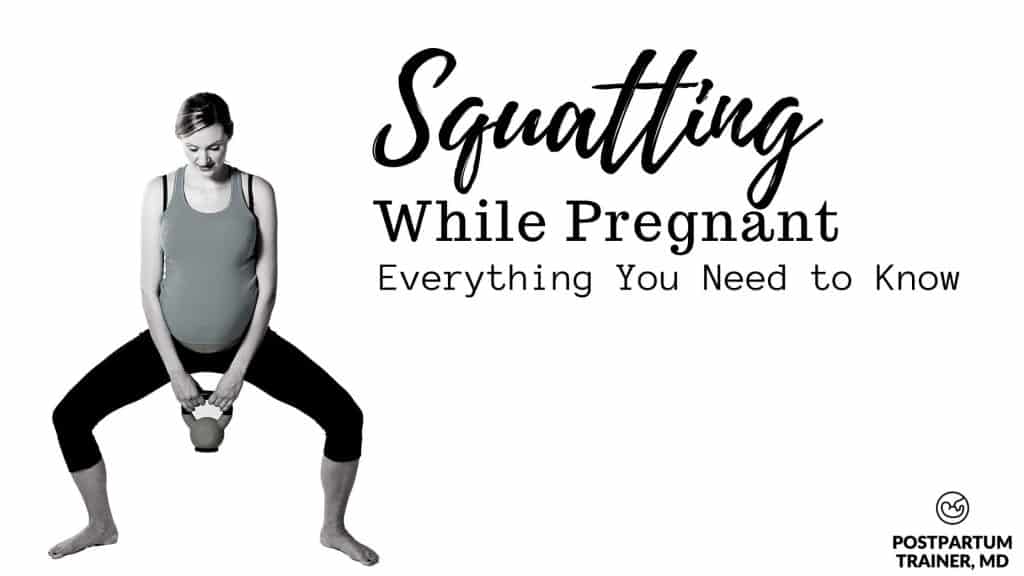
Is It OK To Do Squats While Pregnant?
It is perfectly safe to do squats while pregnant.
Squatting is a natural movement pattern that you should be able to do at all stages of life.
Just think about it. Before toilets were invented, pregnant women had to squat to use the bathroom.
That’s also not the only time you squat.
You squat
- when you sit down,
- when you stand up from a seated position,
- when you pick items up off the floor,
- and when you use the toilet.
But because squatting is a form of exercise, it is important that you get permission from your doctor before doing any type of exercise in pregnancy.
What Are The Benefits of Squats During Pregnancy?
So now, let’s talk about the reasons why you should squat during pregnancy.
Here are the top three benefits:
Squatting Can Help Open Up Your Hips
Childbirth requires you to open your hips wide. Thankfully, squatting is an easy and natural way to help improve your hip mobility.
I talk about this more in depth in 10 Exercises To Help Prepare You For Childbirth.
Squatting Can Increase Your Lower Body Strength
Secondly, squats are a weight bearing exercise. When squatting up and down, you are training the muscles in your quadriceps, adductors, and buttocks
(Here are 7 other butt exercises you can do in pregnancy).
Therefore, all of these muscles will get stronger by performing squats on a regular basis.
That’s why I recommend that you do squats both during pregnancy and the postpartum to help maintain lower body muscle tissue.
Squatting Can Improve Pelvic Floor Strength
Thirdly, squats are great for strengthening the muscles of the pelvic floor. Unfortunately, the pelvic floor muscles are weakened significantly during pregnancy and childbirth.
This can lead to conditions such as urinary incontinences and pelvic organ prolapse.
I go over this in more detail in How To Strengthen Your Pelvic Floor Postpartum.
Other Benefits
Those are just some of the benefits of squatting while pregnant.
But to be honest there are many more.

Other benefits include:
- Increased lean muscle mass
- More calories burned
- Improved total body circulation
- Improved mood
These last few benefits aren’t specific to squats. You can experience these with any form of resistance exercise during pregnancy.
So Squatting Won’t Hurt My Baby?
Don’t worry, squatting won’t hurt your baby. You wont be squishing your uterus or anything like that.
Remember what I mentioned before, squatting is a natural movement that has been done for thousands of years.
Many women even give birth in a squatting position because of the way that it naturally opens up your hips.
Your uterus is in a safe position when you are in the bottom of a squat.
When Can You Start Doing Squats During Pregnancy?
So, is it safe to do squats in the first trimester?
If you have a healthy pregnancy and your doctor gives you medical clearance, then you can begin squatting right away.
This means that yes, you can do squats in the first trimester.
The only caveat is that you never want to work yourself to the point of fatigue/exhaustion.
It is easy to get dehydrated in pregnancy which can lead to muscle cramps and uterine cramping. Stay hydrated and listen to your body.
Can I Do Squats In The Third Trimester?
It is perfectly safe to do squats in the third trimester as well. The important thing is that you do them as safely as possible.
This means:
- Using a slightly wider stance (to help keep balance),
- Using something to help support you, if needed, such as a chair or a ledge,
- Having someone nearby to assist you in case of anything.
All of the same rules apply. Never exercise to the point of exhaustion. Always have water handy and stop if you experience any discomfort.
Here is a video of me squatting throughout my entire pregnancy.
Signs That You Should Not Squat/Exercise During Pregnancy
So what should you look out for while doing squats or any type of exercise in pregnancy?
The very first things you need to look out for is:
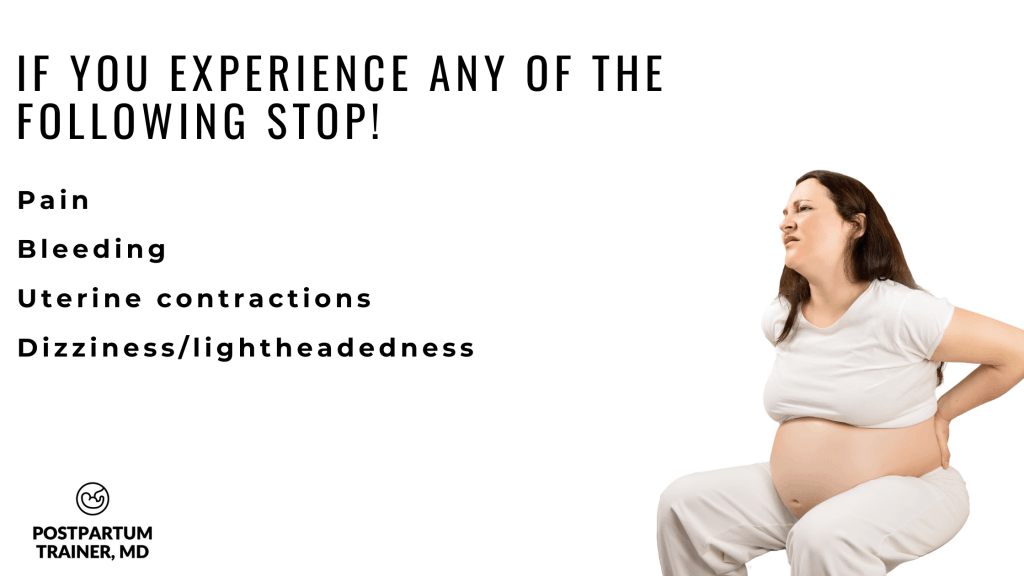
Pain
If you experience pain…
- in your knees,
- in your back,
- in your hips,
- in your groin.
then stop performing the exercise. It may be beneficial to see a personal trainer/physical therapist to assess your squatting technique and your joints before continuing.
Pain is never a good sign, and it is a signal from your body that something is up.
Vaginal Bleeding
Bleeding in pregnancy isn’t normal.
While many women will experience some type of spotting/bleeding in early pregnancy, it is important to check with your provider before continuing any exercise.
Bleeding in the 2nd or 3rd trimesters should always be taken seriously and should prompt medical attention.
It should go without saying that if you bleed while squatting, then stop and seek attention from your provider!
Uterine Cramping/Contractions
Thirdly, pay attention to any uterine cramping or contractions that worsen with squatting or exercise.
These symptoms can be caused by dehydration, which exercise can worsen.
As always, stop exercising, hydrate, and monitor your symptoms. If the cramping persists and becomes regular, you should seek medical attention.
Dizziness/Lightheadedness
Lastly, be on the lookout for feelings of lightheadedness or dizziness. These symptoms could also be caused by dehydration, or strenuous activity.
Do not perform exercise activity during pregnancy if you are not feeling well.
–
Okay, now that we have covered what to look out for, let’s go over how to squat during pregnancy.
How To Squat While Pregnant
Squatting while pregnant is very similar to squatting while you’re not pregnant.
Keep in mind that your body is designed to squat. Otherwise, our bones and joints wouldn’t be aligned as they are.
With that said, here are the key things you need to focus on while squatting.
- Keep your feet shoulder-width apart or wider.
- Point your toes out at least 15-30 degrees.
- Before initiating the squat, brace your core muscles and squeeze your glutes.
- To start the squat, begin bending at the hips and the knees at the same time.
- As you descend, keep your spine neutral and your chest up.
- Make sure that your heels remain flat on the floor.
- Also, don’t let your knees collapse inward. Keep them pointing in the same direction as your toes.
- After your reach a comfortable depth, reverse the movement by squeezing your butt muscles to finish the movement.
If you are in the third trimester, your range of motion may be a bit limited.
Focus on widening your stance to create a stable base of support. You don’t want to lose your balance.
Alternatively you can also hold onto something for support such as a chair or a table.
7 Safe Squatting Exercises For Pregnancy
Okay, next let’s talk about some safe squatting exercises you can do while pregnant.
The first one is:
The Box Squat
The box squat is one of the safest and easiest squatting exercises you can do during pregnancy.
It is basically the same as sitting down in a chair and standing back up.
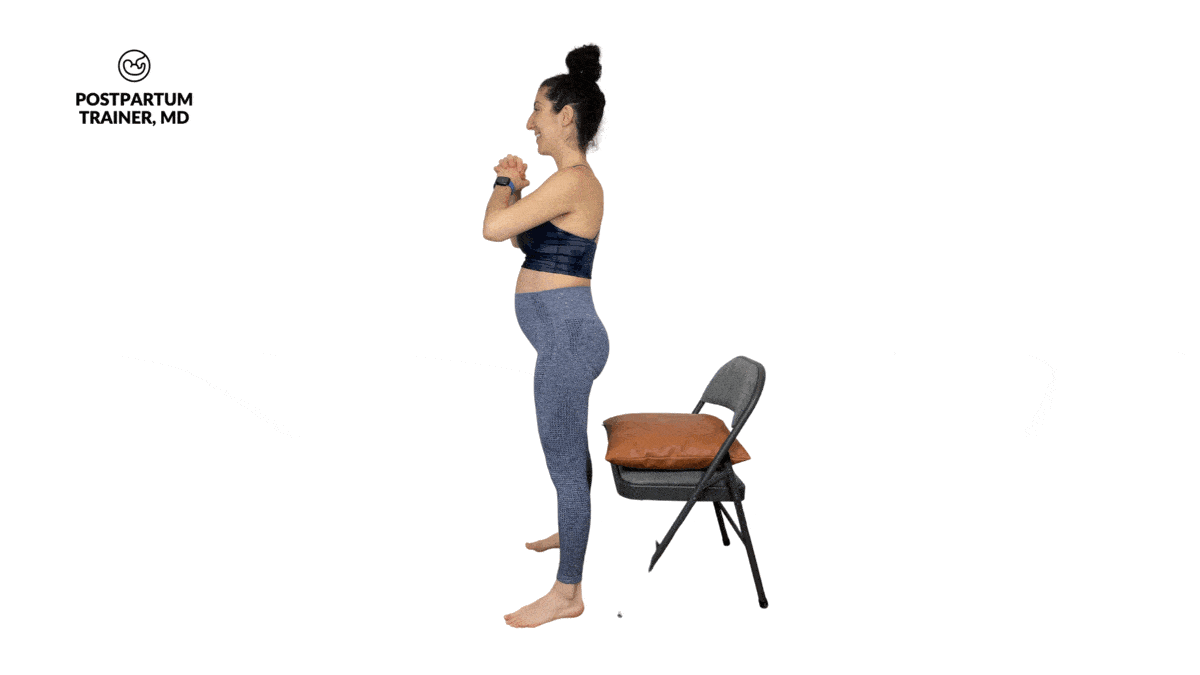
If you are a beginner, you can do this exercise using a tall chair. The taller the chair, the easier the exercise.
Just make sure to pause for 1 second at the bottom position before squatting back up.
Traditional Squats
The second squat variation that is totally safe to perform is the traditional squat. This is the exercise you think of when you hear the word squat.
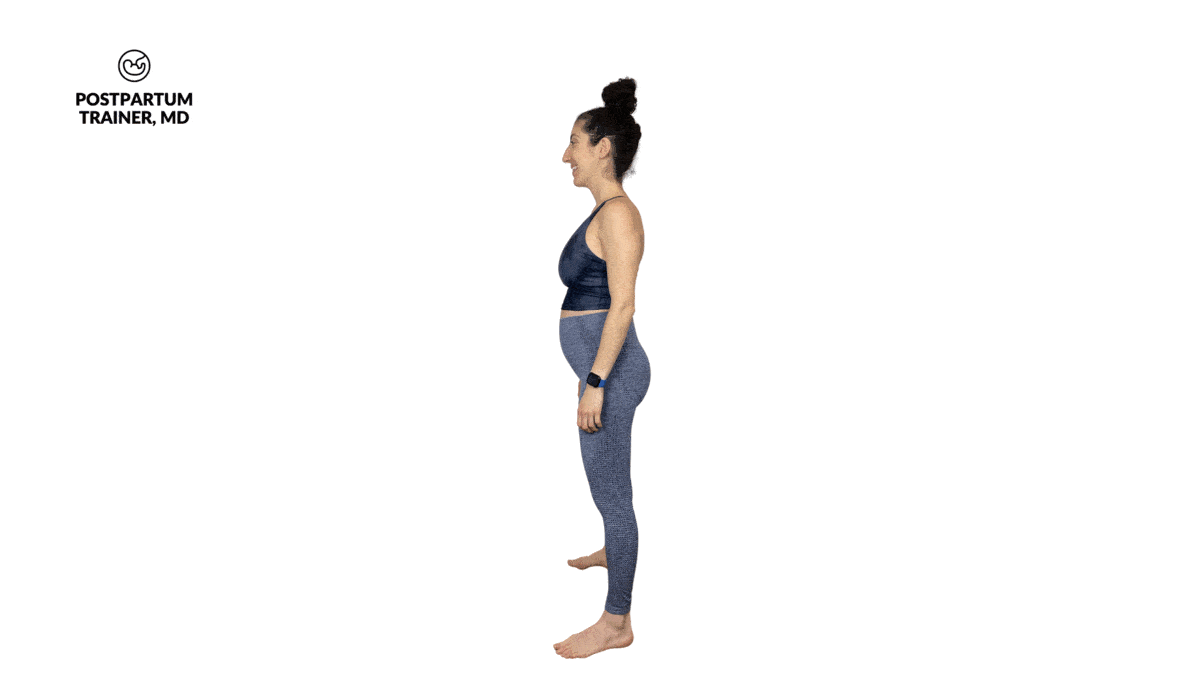
Just make sure to follow all of the steps I outlined above.
If you need support, just do it in front of a chair or a table to help you get back up.
To make this exercise more difficult, use one of the postpartum trainer glute bands which you can purchase here.
Sumo Squats
Next up are sumo squats. This exercise is done with a much wider stance, with your feet turned out to about 45 degrees.
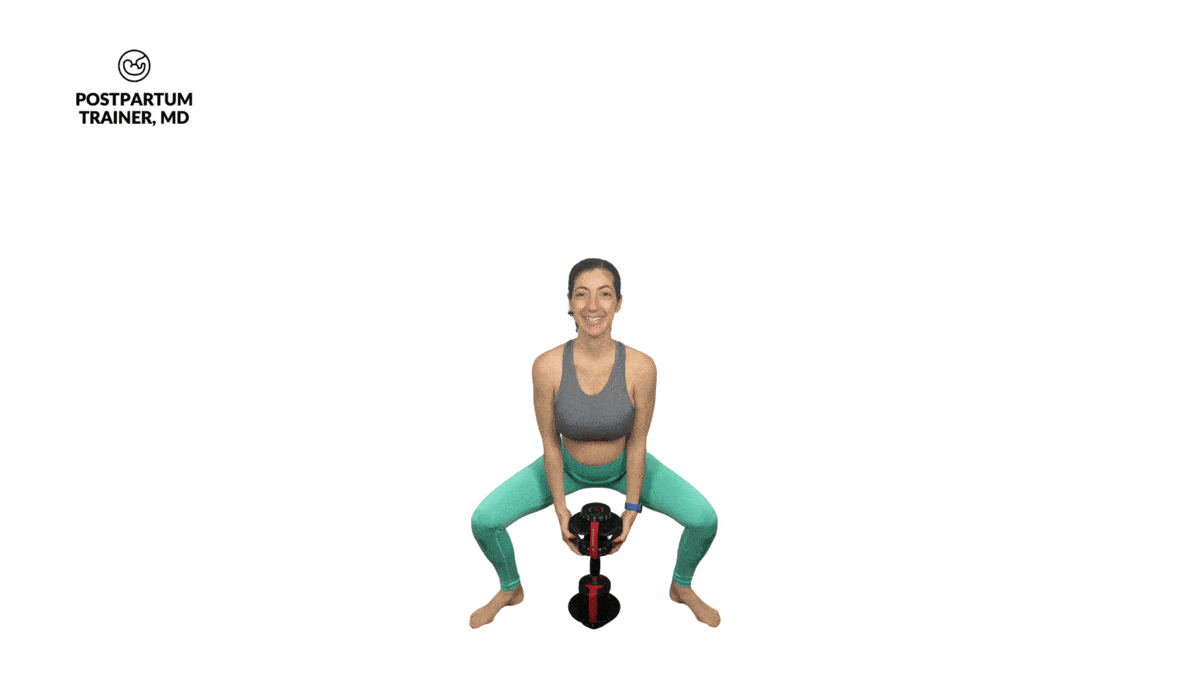
The wider stance will help with support and it will train your inner thighs much more than the traditional squat.
Deep Squats
The deep squat is an exercise that is great for improving hip mobility and getting you comfortable at the end range of motion of a squat.
When you reach the bottom, place your elbows inside your knees and rock back and forth from one side to the next.
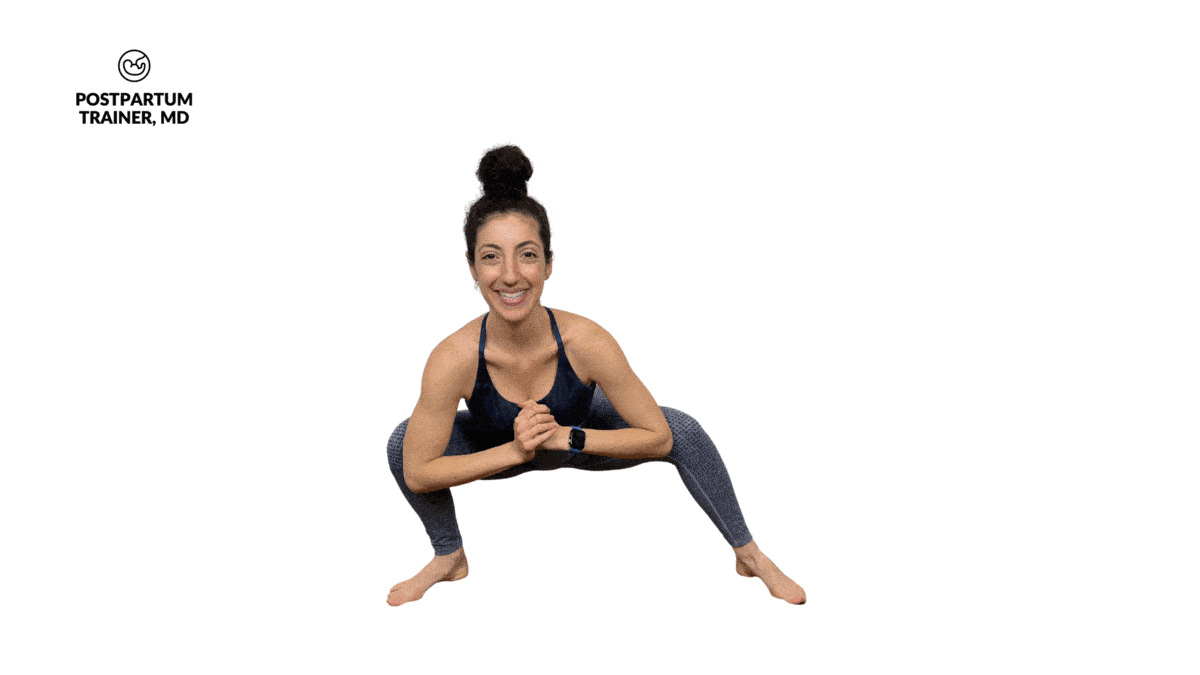
Alternatively, you can hold on to a pole or a beam to help you keep your balance as you rock side to side.
Goblet Squats
The goblet squat is the first weighted squat variation that you can do during pregnancy.
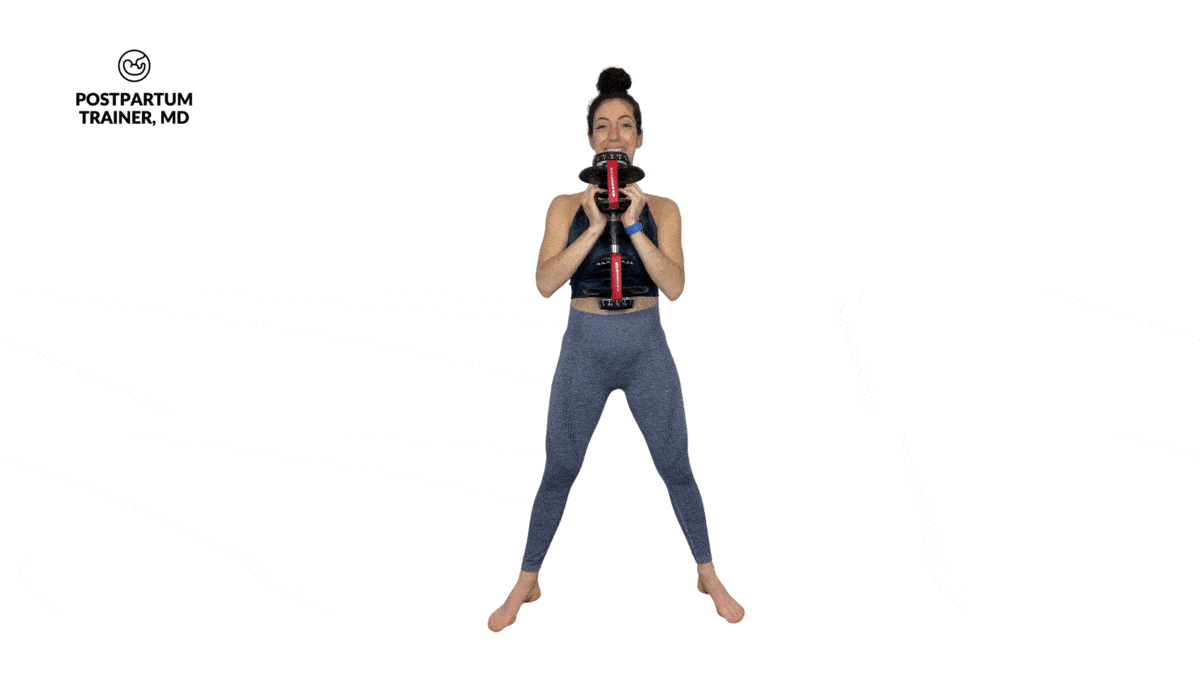
The goblet squat is a great exercise because it does not present a heavy load on your back.
Instead, you will hold the weight up by your chest which can actually help with balance.
Uneven Squats
The uneven squat is another weighted squat variation that strengthens your core muscles.
To do it, you will need a dumbbell or a kettlebell that you will hold up on one shoulder.
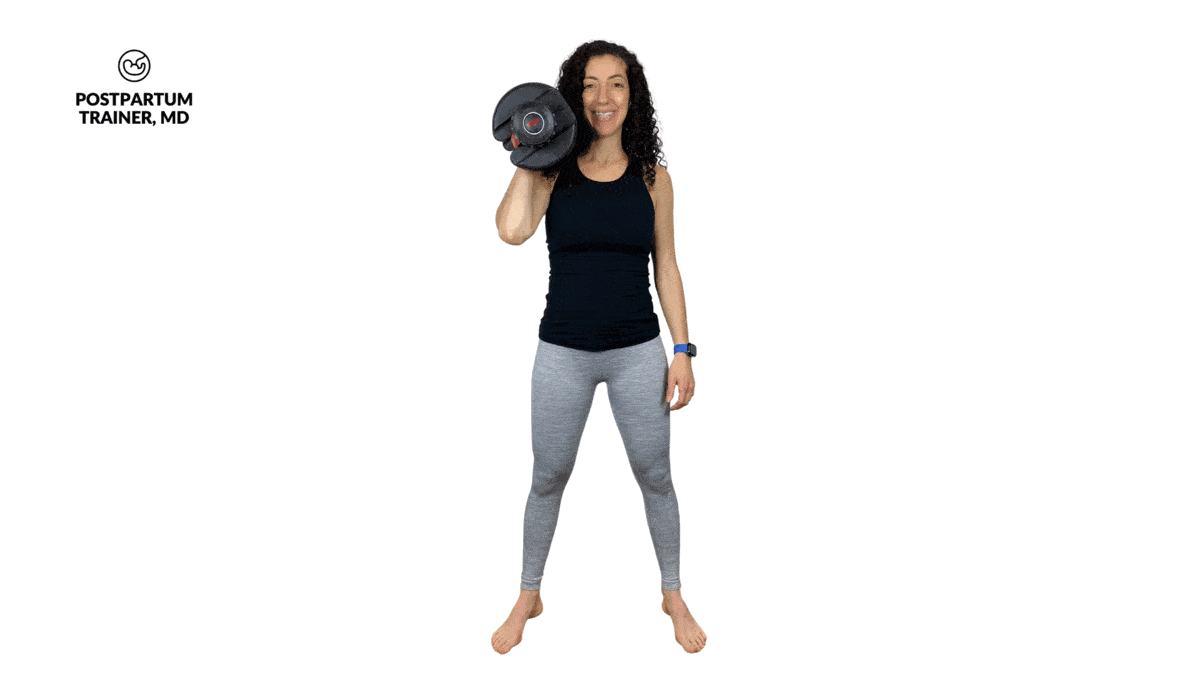
This will present an uneven load to your core muscles, strengthening your oblique muscles as you train the squat.
Barbell Squats
So can you do barbell squats while pregnant?
Yes, you can do barbell squats during pregnancy. But before you do, just make sure that your doctor says it is okay for you to do so, and make sure that you do it under supervision.
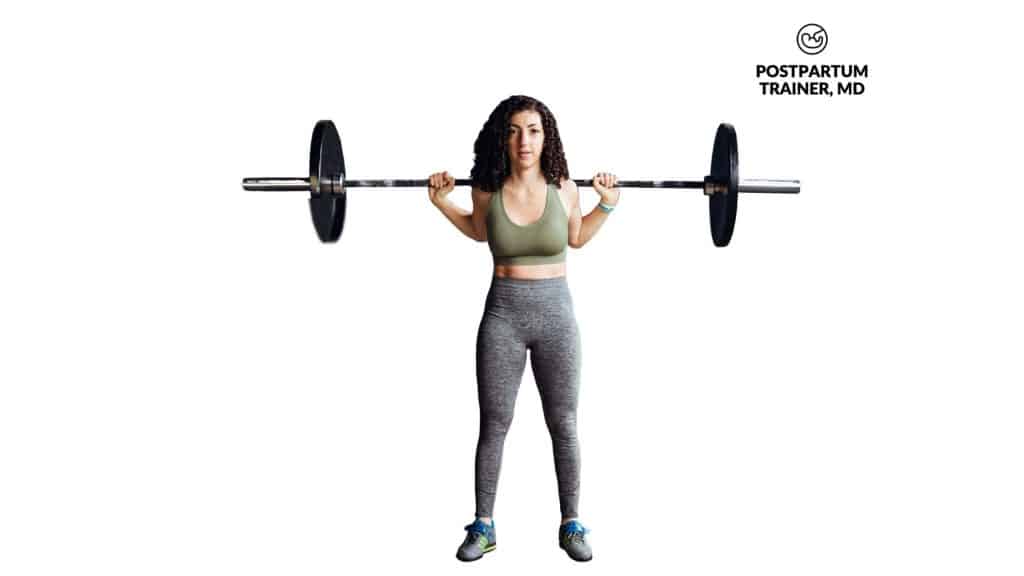
The important thing is that you do not lift heavy.
Here is a good rule of thumb to follow:
- Pick a moderate weight that you can do comfortably for 10 or more repetitions.
- Instead of doing 10 repetitions, only do 6-8 repetitions.
- Always stop the set short if you begin to experience shortness of breath during the exercise.
Remember, this isn’t the time to try and set new personal bests. Just use barbell squats as a way to maintain your range of motion and add some resistance to the movement.
Related Questions
Does squatting help dilate The cervix?
Squatting does not help dilate the cervix. Squatting can however, help prepare you for labor and childbirth by strengthening your legs and improving your hip mobility.
Does Squatting Help Induce Labor?
Squatting does not help induce labor either. The only clinically proven method of inducing labor is to cause your body to release oxytocin.
This can be done with several medical interventions.
I go over these in more detail in Can Walking Actually Help Induce Labor?
Final Words On Squatting In Pregnancy
So there you have it. Squatting is safe during pregnancy, provided you do them correctly and you have received clearance from your provider.
Be sure to include this amazing exercise to experience all the benefits it has to offer.
So now I have a question for you.
Have you squatted during your pregnancy?
Which variation above are you excited to try?
Comment below and let me know!
Related Posts On Squatting While Pregnant
- Can I Do Squats After Giving Birth
- 9 Easy Leg Exercises You Can Do In Pregnancy
- Exercises To Train Your Inner Thigh During Pregnancy
- What To Do If You Have Round Ligament Pain
Get Four Free Workouts To Help Strengthen Your Pelvic Floor & Heal Your Mommy Tummy!

Brittany Robles, MD, MPH, CPT
Brittany Robles is a full-time OBGYN physician, a NASM certified trainer, and a prenatal and postnatal fitness specialist. She holds a Master of Public Health degree in maternal health with a special interest in exercise and nutrition. She is also the co-author of The White Coat Trainer. Learn more about her here.
Sharing is Caring – Send This To A Mom In Need!
